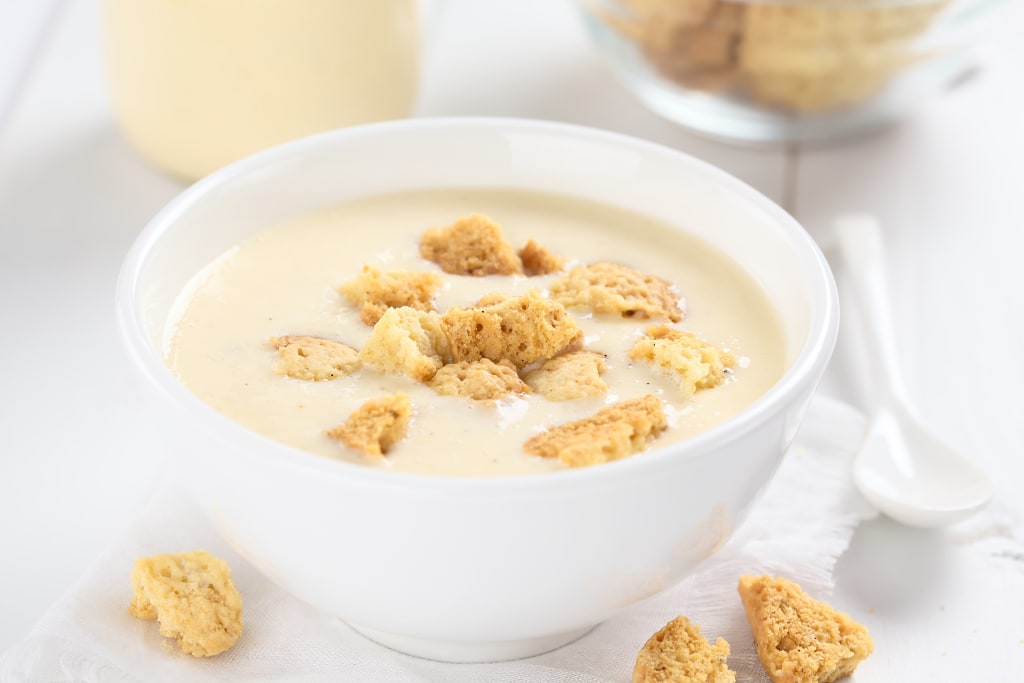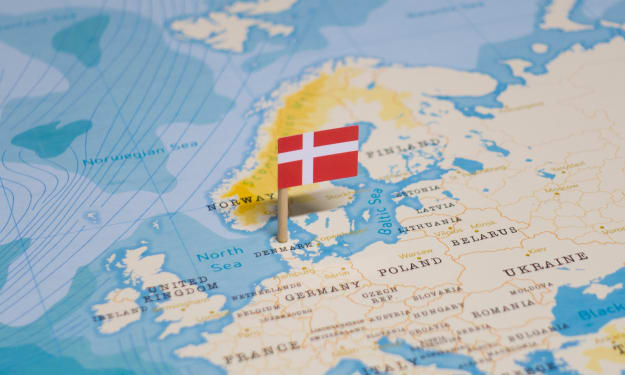How My Childhood Summer Foods Sculpted Me for Life
My whole heritage is based on food ( recipe included)

Growing up in Denmark, summers were all about the food. Well, honestly, everything is about the food. But summers were magical.
Whether hanging out at my grandparents’ farm, eating carrots straight out of the ground and picking peas from the vines, or gathering potatoes, plums, and gooseberries. Or cherries, strawberries, red currant, you name it. Or it was fishing in the little stream by my other grandparents' house:
Foods were an essential part of summers.
My grandparents had a pig farm. And lots of chickens. And land. It was not a small farm and had in its prime been a rather big farm in the area. When we were little, it was being outworked by the more industrial-type farms, but it was still my grandparents’ livelihood, and we all went to help during the summer with harvesting. Aunts, uncles, and cousins galore.
Granted, as kids, we were more about playing in the hay bales and making forts out of them, but we still were helpful in our own ways.
After a day of playing outside in the hot weather, there was nothing more amazing than coming into my grandmother’s kitchen, where the long kitchen table would be filled with bowls and bowls of cold buttermilk soup. And crunchy little cookie-type things to add to it. And sometimes strawberries or other berries.
Kærnemælkskoldskål med kammerjunkere is Danish summer. (Though fresh strawberries with heavy cream make a close runner-up).
Kærnemælkskoldskål litterally translates to buttermilk cold bowl. Kammerjunkere is a bit more tricky. It means Valet de chambre or Groom of the Chamber. While that was a title to many young men entering the royal courts as servants, it is believed that the cookie was named after that title, because it was considered less than a cookie, but also less than a biscuit/cracker. So it did not really fit in anywhere. Except with kærnemælkskoldskål of course.
After moving to the states, there are so many different foods, that are not easy to come by. Impossible to buy, because they are native to my country or culture. Impossible to import because it's either fresh foods or wicked expensive. So there's not much to do except make them from scratch, and then sometimes that's not enough.
Fortunately, I can recreate the buttermilk soup (kærnemælkskoldskål or just koldskål) as well as the cookie (kammerjunkere) fairly easily. The only thing that's a bit of hardship is pasteurized egg yolks. Why is that not a thing in America?
For the soup:
- 4 cups of buttermilk
- 1-2 egg yolks (I submerge the whole egg in boiling water for about 15 seconds, before I put it in ice, then crack the eggs and separate yolks from the whites. Scaring of the salmonella).
- 1/4 cups of sugar
- 1/2 tsp of vanilla extract
- 1 cup of heavy cream
Now the first thing you want to do is to cream the sugar and egg yolks together, until fluffy and white in color. Then add the vanilla extract.
In a different bowl, whip up the heavy cream. Not too stiff, but till it forms peaks when lifting the whisks out of the cream.
Mix the buttermilk into the egg mixture.
Then gently fold the heavy cream into the buttermilk/egg mixture.
And there you have it. Buttermilk soup.
If you want to add the cookies in there, I might suggest Nilla Wafers. They are by far the closest thing you come to kammerjunkere, without having to bake them yourself. If you can get the mini ones, you are closer in size as well. Either break them into pieces and drizzle over the buttermilk soup, or let them soak in the soup for a bit to soften up, then use your spoon to break them to bits, or eat the whole thing as is. Whichever makes the most sense to you at the moment.
Strawberries or blueberries make a great addition too.
Some people like to add a touch of lemon to add flavor, but in my opinion, it takes away from the actual flavor of the buttermilk soup.
Growing up, we were by no means wealthy. My parents worked long hours to make ends meet. My mother sewed most of my sister's and I's clothes. My dad spent lots of days in the nearby forest gathering and chopping up wood the forest owners wanted to be gone, so we had wood for our fireplace for heat. And we got most of our meats (pork and chicken), eggs, veggies, and fruit from my grandparents. As a thank you for helping out with various things (my mom did their taxes, my dad helped on the farm), and when it was time for the pigs to get slaughtered, my dad was there helping with dividing and carving the meat they would keep for themselves because he worked in a slaughterhouse. (We ate a lot of pork growing up).
But whatever we did to help, however we spent our time at our house, or at my grandparents' farm, we all gathered around the food at the end of the day.
So to me, food is magical. And especially food in the summertime. And this dish is the epitome of Danish summer!
About the Creator
Anne Pedersen
Freelance writer, confident notebook carrier, procaffinator, and all-round neurodiverse Danish viking word nerd living in the United States.






Comments (1)
Great story, Anne! It echoes my own about Finnish summer food. This is a wonderful way to celebrate our ethnic foods and introduce them to the world.